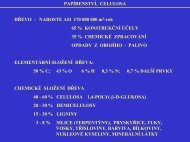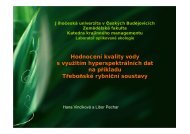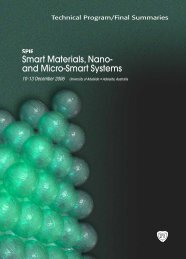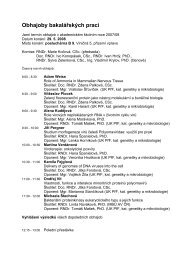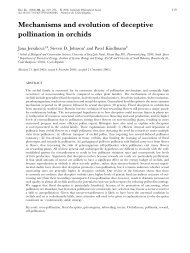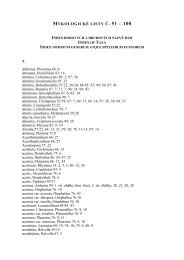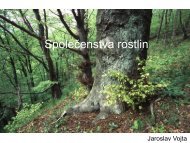Spatial distribution of phytoplankton in the eastern part of the North ...
Spatial distribution of phytoplankton in the eastern part of the North ...
Spatial distribution of phytoplankton in the eastern part of the North ...
- No tags were found...
Create successful ePaper yourself
Turn your PDF publications into a flip-book with our unique Google optimized e-Paper software.
ones is l<strong>in</strong>ked positively with <strong>the</strong> depth <strong>of</strong> seaand negatively with fluorescence. At stations,sited <strong>in</strong> negative <strong>part</strong> <strong>of</strong> second ord<strong>in</strong>ationaxis (stations 123, 157, 143), high values <strong>of</strong>fluorescence were measured. At <strong>the</strong> samestations, <strong>the</strong>re were also higher numbers <strong>of</strong>diatom species.Figure 17. Positions <strong>of</strong> <strong>the</strong> samples and <strong>the</strong>environmental variables <strong>in</strong> <strong>the</strong> space <strong>of</strong> <strong>the</strong>first two ord<strong>in</strong>ation axes. PCA analysis. Theratio <strong>of</strong> <strong>the</strong> species composition <strong>of</strong> allsamples is shown (yellow – diatoms, green –d<strong>in</strong><strong>of</strong>lagellates, grey – o<strong>the</strong>rs).-1.0 1.0coast145149147143151depthfluorescence-1.0 1.0153123temperaturesal<strong>in</strong>ity155abundance1573.5.2. Relationships between <strong>phytoplankton</strong> and environmental characteristicsThe <strong>in</strong>fluence <strong>of</strong> several environmental characteristics on species composition was statisticallytested us<strong>in</strong>g RDA analysis. Separate analyses were made to detect <strong>the</strong> <strong>in</strong>fluence <strong>of</strong> temperature,sal<strong>in</strong>ity, fluorescence, distance from <strong>the</strong> coast, depth and <strong>the</strong> total abundance <strong>of</strong> algae. Interest<strong>in</strong>gly,only <strong>the</strong> <strong>in</strong>fluence <strong>of</strong> distance from coast proved to be significant, with a p-value <strong>of</strong> 0.001. All o<strong>the</strong>rcharacteristics here found not to be statistically significant for <strong>the</strong> transect. The results <strong>of</strong> analysiswith distance from <strong>the</strong> coast as <strong>the</strong> tested environmental variable are given <strong>in</strong> Tab. 4.**** Summary ****Axes 1 2 3 4 Total varianceEigenvalues : 0.343 0.201 0.132 0.090 1.000Species-environment correlations : 0.972 0.000 0.000 0.000Cumulative percentage variance<strong>of</strong> species data : 34.3 54.4 67.6 76.6<strong>of</strong> species-environment relation : 100.0 0.0 0.0 0.0Sum <strong>of</strong> all eigenvalues 1.000Sum <strong>of</strong> all canonical eigenvalues 0.343**** Summary <strong>of</strong> Monte Carlo test ****Test <strong>of</strong> significance <strong>of</strong> all canonical axes: Trace = 0.343F-ratio = 3.658P-value = 0.0010Table 4. Part <strong>of</strong> <strong>the</strong> RDA analysis output.18




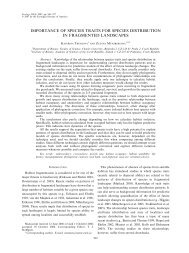
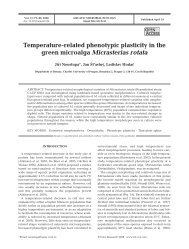
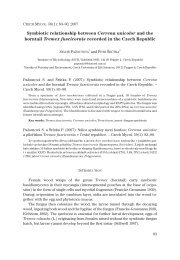
![[Cr(urea)6]Cl3](https://img.yumpu.com/47220263/1/184x260/crurea6cl3.jpg?quality=85)
